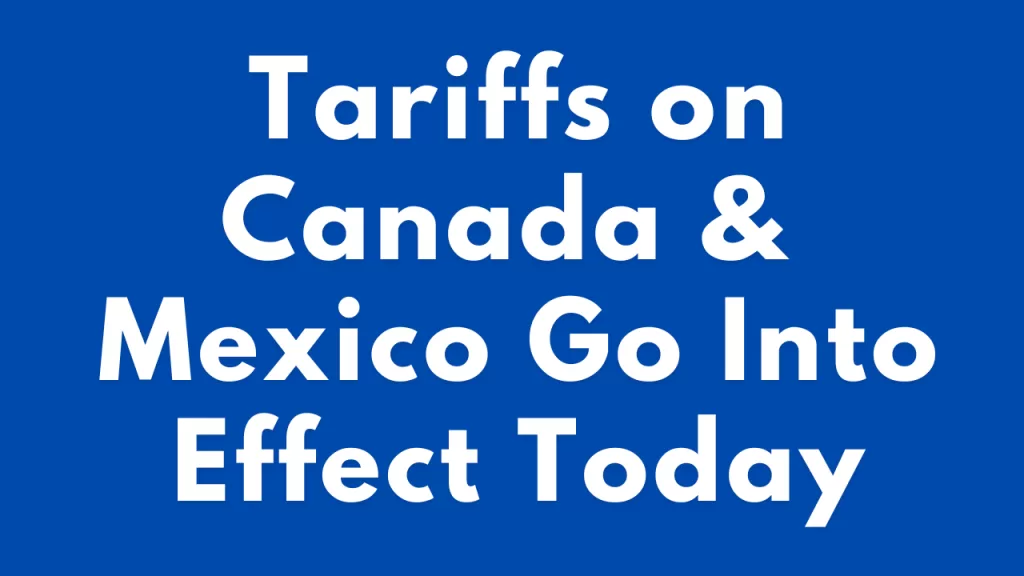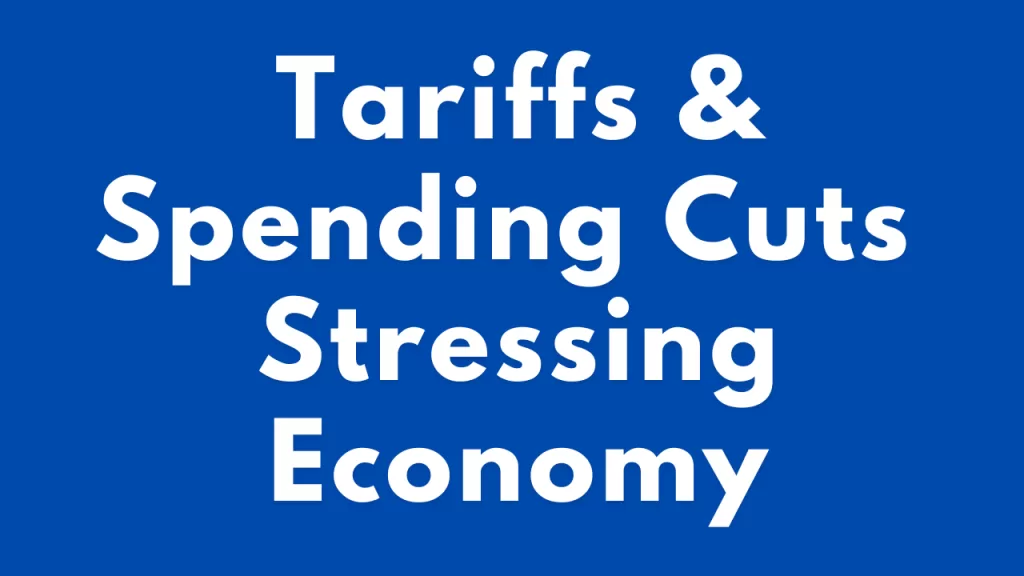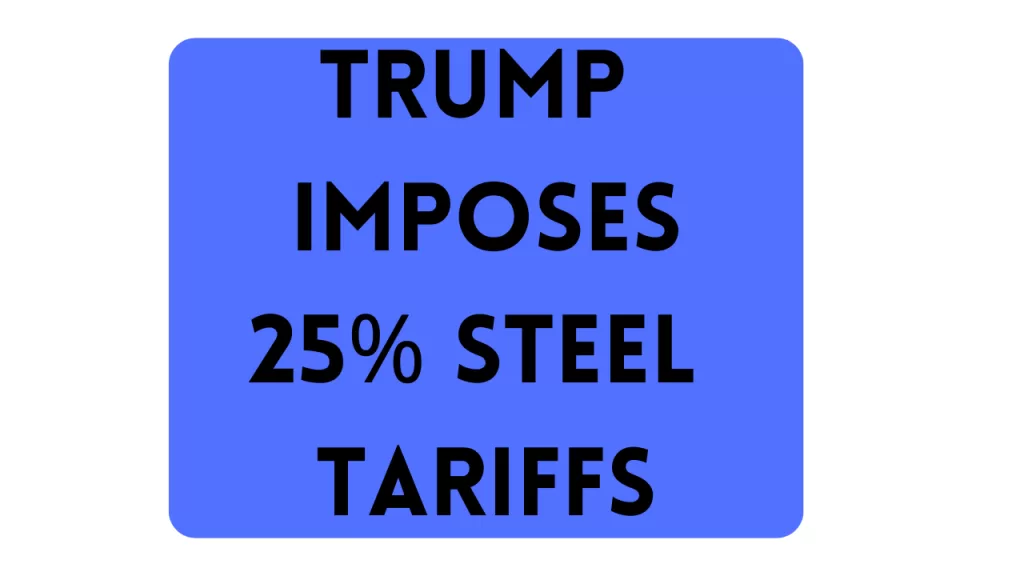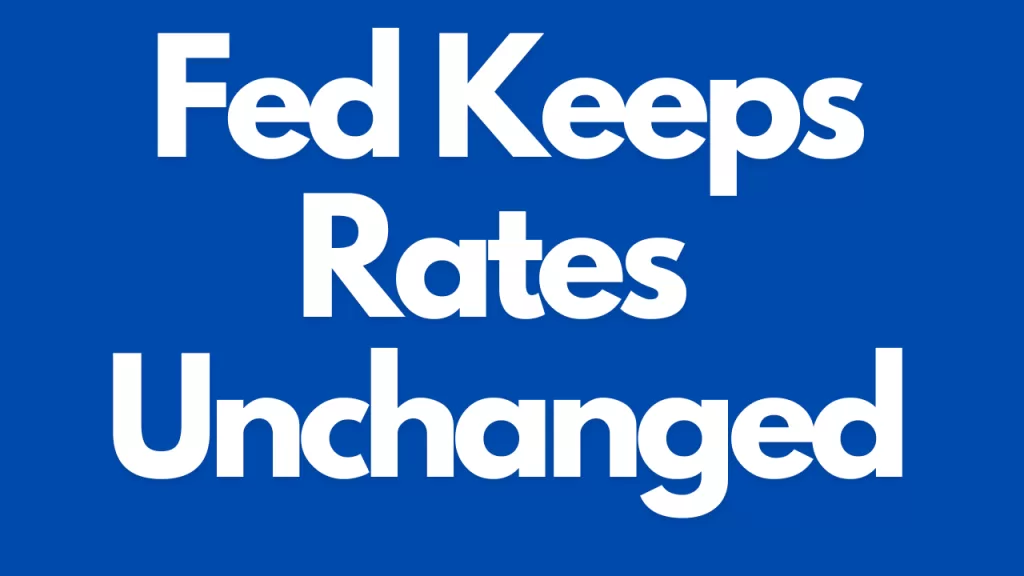How Small Businesses Can Prepare for the Impact of Tariffs
Preparing for tariffs
Tariffs, or taxes imposed on imported goods, can have significant effects on small businesses. Whether they result in higher costs for raw materials, supply chain disruptions, or increased prices for consumers, tariffs can challenge profitability and long-term sustainability. To navigate these complexities, small business owners must be proactive, strategic, and adaptable. This article explores key strategies that small businesses can employ to mitigate the impact and maintain their competitive edge.

Assess the Impact of Tariffs
The first step for any small business is to conduct a thorough assessment of how they will affect operations. Business owners should:
- Identify which products or materials are subject.
- Analyze cost increases and how they affect pricing and profit margins.
- Review trade agreements & exemptions that might be beneficial.
- Consult with industry associations or trade experts to understand the broader economic impact.
Diversify Suppliers and Markets
A strong defense against tariffs is supplier and market diversification. Businesses should:
- Identify alternative suppliers from countries not affected by tariffs.
- Establish relationships with multiple suppliers to reduce dependency on any single source.
- Consider nearshoring (sourcing from nearby countries) to reduce supply chain risks.
- Explore new markets to offset losses from related price increases.
Optimize Cost Structures
To absorb related costs without significantly increasing prices, small businesses should:
- Negotiate better terms with suppliers or explore bulk purchasing discounts.
- Streamline operations and improve efficiency to reduce overhead costs.
- Invest in automation and technology to enhance productivity.
- Evaluate pricing strategies, ensuring that any necessary price increases are well-communicated to customers.
Leverage Trade Policies and Advocacy
Understanding trade policies and engaging in advocacy efforts can also help small businesses adapt. Steps include:
- Monitoring policy changes and seeking professional legal or trade advice.
- Applying for tariff exemptions or relief programs where applicable.
- Engaging with business associations and lobbying groups to voice concerns and influence policy.
- Collaborating with industry peers to share insights and strategies.
Strengthen Financial Resilience
Financial preparedness can help small businesses weather the uncertainty caused by tariffs. Key strategies include:
- Maintaining a cash reserve to manage unexpected cost fluctuations.
- Exploring alternative financing options such as grants, loans, or government programs designed to assist businesses affected by trade policies.
- Adjusting budgeting and financial forecasting models to account for potential tariff increases.
Enhance Customer Communication
Price adjustments due to tariffs may be inevitable, but transparent communication with customers can help maintain trust. Businesses should:
- Clearly explain price changes and the reasons behind them.
- Offer value-added services or loyalty programs to retain customers.
- Educate consumers on how tariffs impact the industry and product availability.
Tariffs
While they pose challenges for small businesses, they also present opportunities for innovation, strategic planning, and operational improvements. By assessing risks, diversifying suppliers, optimizing costs, engaging in trade advocacy, strengthening financial resilience, and maintaining clear customer communication, small businesses can successfully navigate the impact of tariffs and continue to thrive in a dynamic global market.
Contact Factoring Specialist, Chris Lehnes
Briefing Document: Preparing Small Businesses for the Impact of Tariffs
Source: “How Small Businesses Can Prepare for the Impact of Tariffs” by Chris Lehnes (March 7, 2025)
Executive Summary:
This article provides a practical guide for small businesses navigating the challenges and potential opportunities presented by tariffs. It emphasizes a proactive and strategic approach, focusing on risk assessment, diversification, cost optimization, policy engagement, financial resilience, and transparent customer communication. The core message is that while tariffs pose difficulties, adaptability and strategic planning can enable small businesses to not only survive but also thrive in a changing global market.
Key Themes and Ideas:
- Impact Assessment is Crucial: The article stresses the importance of understanding the specific impact of tariffs on a business’s operations.
- “The first step for any small business is to conduct a thorough assessment of how they will affect operations.”
- This includes identifying affected products/materials, analyzing cost increases, reviewing trade agreements/exemptions, and seeking expert advice on the broader economic impact.
- Diversification as a Mitigation Strategy: Reducing reliance on single suppliers and markets is a key defensive tactic.
- “A strong defense against tariffs is supplier and market diversification.”
- This involves identifying alternative suppliers, considering nearshoring, and exploring new markets.
- Cost Optimization for Absorption: Businesses need to find ways to absorb increased costs without drastically raising prices.
- “To absorb related costs without significantly increasing prices, small businesses should…Streamline operations and improve efficiency to reduce overhead costs.”
- Strategies include negotiating better terms, streamlining operations, investing in automation, and carefully evaluating pricing strategies.
- Leveraging Trade Policies and Advocacy: Small businesses should actively engage with trade policies and advocate for their interests.
- “Understanding trade policies and engaging in advocacy efforts can also help small businesses adapt.”
- This includes monitoring policy changes, seeking legal/trade advice, applying for exemptions, and collaborating with business associations.
- Financial Resilience is Essential: Building a strong financial foundation is critical for weathering uncertainty.
- “Financial preparedness can help small businesses weather the uncertainty caused by tariffs.”
- Key actions include maintaining a cash reserve, exploring alternative financing options, and adjusting financial forecasting.
- Transparent Customer Communication: Open and honest communication with customers about price adjustments is vital for maintaining trust.
- “Price adjustments due to tariffs may be inevitable, but transparent communication with customers can help maintain trust.”
- Businesses should clearly explain price changes, offer value-added services, and educate consumers on the impact of tariffs.
- Opportunity in Adversity: Tariffs, while challenging, can spur innovation and strategic improvements.
- “While they pose challenges for small businesses, they also present opportunities for innovation, strategic planning, and operational improvements.”
Key Actionable Items for Small Businesses:
- Conduct a comprehensive tariff impact assessment.
- Develop a supplier diversification plan.
- Identify opportunities to optimize operational costs.
- Monitor trade policy changes and explore advocacy options.
- Strengthen financial resilience through cash reserves and alternative financing.
- Create a transparent communication plan for customer price adjustments.
Conclusion:
The article provides a well-structured and practical roadmap for small businesses facing the challenges of tariffs. By taking a proactive and strategic approach, small businesses can mitigate the negative impacts and position themselves for continued success in the global
Navigating Tariffs: A Study Guide for Small Businesses
Quiz
Answer the following questions in 2-3 sentences each.
- What is the first step a small business should take when preparing for the impact of tariffs?
- Why is it important for a small business to diversify its suppliers when dealing with tariffs?
- Name two ways a small business can optimize its cost structure to absorb the impact of tariffs.
- How can understanding trade policies and engaging in advocacy efforts help a small business navigate tariffs?
- What are the benefits of maintaining a cash reserve when dealing with the uncertainty of tariffs?
- Why is clear communication with customers important when a small business has to raise prices due to tariffs?
- Besides diversification, name one strategy that can be implemented to deal with the impact of Tariffs.
- What is “nearshoring,” and why might a small business consider it in response to tariffs?
- Besides grants and loans, name one other alternative financing option a small business might explore in response to trade policies.
- According to the source, what opportunities might tariffs present for small businesses?
Quiz Answer Key
- The first step is to conduct a thorough assessment of how tariffs will affect their operations, which includes identifying which products or materials are subject to tariffs and analyzing cost increases. This allows them to understand the scope of the impact on their pricing and profit margins.
- Diversifying suppliers helps to reduce dependency on any single source and mitigate the risk of supply chain disruptions caused by tariffs. Identifying alternative suppliers from countries not affected by tariffs can also help maintain stable costs.
- A small business can optimize its cost structure by negotiating better terms with suppliers or exploring bulk purchasing discounts, and they can streamline operations to improve efficiency and reduce overhead costs.
- Understanding trade policies helps small businesses to identify potential exemptions or relief programs. Engaging in advocacy efforts and voicing concerns through business associations and lobbying groups can influence policy decisions.
- Maintaining a cash reserve allows businesses to manage unexpected cost fluctuations caused by tariffs. It also provides a buffer to ensure financial stability during periods of uncertainty.
- Clear communication helps maintain customer trust by explaining the reasons behind price changes, such as the increased cost of materials due to tariffs. Being transparent and educating consumers about the impact on the industry can help retain customers.
- Optimizing cost structures through negotiation with suppliers.
- “Nearshoring” refers to sourcing products or materials from nearby countries. Small businesses might consider nearshoring to reduce supply chain risks and potential delays associated with tariffs on goods from more distant locations.
- Government programs designed to assist businesses affected by trade policies.
- Tariffs can present opportunities for innovation, strategic planning, and operational improvements. They can drive businesses to become more efficient, explore new markets, and strengthen their overall resilience.
Essay Questions
Consider the following questions and structure your essays to answer them in depth using evidence from the text.
- Discuss the importance of strategic planning and adaptability for small businesses in the face of tariffs. Use specific examples from the text to illustrate your points.
- Analyze the ways in which small businesses can strengthen their financial resilience to weather the economic uncertainty caused by tariffs. What are the most critical steps they should take?
- Evaluate the role of supplier diversification in mitigating the impact of tariffs. What are the challenges and benefits associated with this strategy?
- Explain the relationship between effective communication with customers and the ability of a small business to successfully navigate price adjustments due to tariffs.
- How might small businesses leverage trade policies and advocacy efforts to mitigate the negative impacts of tariffs and promote a more favorable trade environment?
Glossary of Key Terms
- Tariff: A tax or duty imposed on imported goods.
- Diversification (of Suppliers): Expanding the range of suppliers to reduce reliance on any single source.
- Nearshoring: Sourcing products or services from nearby countries.
- Cost Optimization: The process of reducing expenses and improving efficiency in business operations.
- Advocacy: Public support for or recommendation of a particular cause or policy.
- Financial Resilience: The ability of a business to withstand financial shocks and uncertainties.
- Cash Reserve: Funds held in readily available accounts to cover unexpected expenses or shortfalls.
- Trade Policy: Government regulations and agreements related to international trade.
- Profit Margin: The percentage of revenue that remains after deducting the cost of goods sold and operating expenses.
- Automation: The use of technology to perform tasks previously done by humans, often to improve efficiency and reduce costs.
- Lobbying: Seeking to influence (a politician or public official) on an issue.









